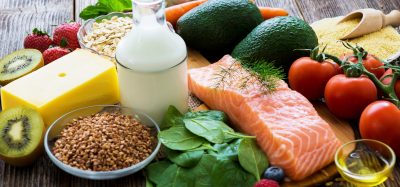How a universal standard for ecolabelling could transform our food system
- Like
- Digg
- Del
- Tumblr
- VKontakte
- Buffer
- Love This
- Odnoklassniki
- Meneame
- Blogger
- Amazon
- Yahoo Mail
- Gmail
- AOL
- Newsvine
- HackerNews
- Evernote
- MySpace
- Mail.ru
- Viadeo
- Line
- Comments
- Yummly
- SMS
- Viber
- Telegram
- Subscribe
- Skype
- Facebook Messenger
- Kakao
- LiveJournal
- Yammer
- Edgar
- Fintel
- Mix
- Instapaper
- Copy Link
Posted: 11 October 2024 | Richard Zaltzman | No comments yet
Reflecting on the opportunity to better inform consumers and support actors across the whole food value chain, Richard Zaltzman, CEO of EIT Food, reveals what’s new with ecolabels.


Few of us alive today can remember a time before food labels. Pick up any product in the supermarket and you’re faced with a vast array of information, from ingredients and allergens to preparation instructions, nutrition scores, and guidance for packaging disposal. Given the significant amount of content already included in our food labels, why do we need ecolabelling?
We need only look back at the short history of nutrition labelling to understand the challenges and opportunities that eco-labelling presents. If labels can communicate the nutritional content of food products in a clear, consistent way, they can inform and empower consumers to make healthier choices. What’s more, encouraging or mandating manufacturers to use these labels can incentivise them to reformulate products to improve their nutritional profile, creating a ripple effect along the supply chain, and resulting in healthier options on the shelves.
Origins of ecolabelling
While it may be less familiar to consumers, the concept of ecolabelling has in fact been around since the 1970s, when the German Government released the first ever environmental verification, the ‘Blue Angel’. Since then, many countries have followed suit with their own ecolabelling schemes and formats – further encouraged by a global agreement on ecolabelling at the United Nations ‘Earth Summit’ in 1992.
Today, the UN Environment Programme defines ecolabelling as “a means of measuring performance and also communicating and marketing the environmental credentials of a product”. Ecolabels can be valuable tools that support consumers to make more sustainable choices and encourage actors across the food value chain to report transparently on their environmental impact.
However – much like its predecessor, the nutrition label – efforts to develop and implement ecolabels have so far been fragmented, with the current formats and methodologies behind various ecolabels lacking standardisation. These discrepancies risk confusing shoppers and disengaging them from ecolabelling altogether. They also present opportunities for actors across the supply chain to engage in greenwashing.
To realise the full potential of ecolabels, we must build on lessons learnt from nutrition labelling efforts, by developing a single system that is independent, credible and harmonised.
One small step for labels, one giant leap for the food industry
An exciting step in the journey of ecolabelling has been the recent establishment of an International Alliance for Food Impact Data, convened by Foundation Earth, which has been integrated into EIT Food. Working together to develop internationally recognised standards for ecolabelling offers great opportunity to drive impact in sustainability across the food value chain.
It is critical that future innovations in ecolabelling take a holistic view – recognising that like nutrition labelling, ecolabels have implications for the whole supply chain, from farm to fork. Collaboration between different actors will be key to the success of a harmonised ecolabelling system, particularly with such a broad range of possible environmental factors to assess – including food miles, carbon footprint, and the recyclability of packaging.
At the very start of the supply chain, introducing ecolabels has a significant impact on farmers producing the ingredients that make up our food. It is essential that we support farmers to produce food more sustainably, while safeguarding their livelihoods.
The Regenerative Innovation Portfolio – an ecosystem collaboration established as a Food Innovation Hub Europe Initiative of the World Economic Forum, and delivered by EIT Food and Foodvalley NL – is aiming to tackle this challenge, by unlocking new partnerships across the value chain. Demonstrating pathways to transform at scale presents an opportunity to boost the supply and value of regeneratively produced products, and de-risk farmers transitioning to regenerative agriculture.
The vital role of innovation
This underscores the importance of accelerating and scaling innovations that will support farmers to make the transition. One startup already seeing market success is Geopard Tech, a German company supporting farmers to both produce food more sustainably and manage their land in ways that protect the local environment. Its cloud-based analytics platform helps users make the most of opportunities around digital farming, agronomy and precision farming, and the technology has already been implemented in the field with great success, in partnership with the likes of John Deere and Corteva.
Alongside this, innovation has a crucial role to play in introducing new ingredients to market, which aids the development of sustainable food products. The Dutch startup NoPalm Ingredients creates environmentally friendly microbial oils to substitute palm and other tropical oils in food, while Bon Vivant is a French biotech firm specialising in precision fermentation methods to produce dairy proteins without animals, reducing the environmental footprint of traditional dairy products.
The environmental impact of a product not only includes its production and manufacturing, but also encompasses its packaging and journey from farm to shelf. Notpla is an example of a UK-based startup tackling the packaging challenge with a revolutionary material made from seaweed and plants that naturally biodegrade in weeks, offering solutions for food containers, dissolving pods and films, and more. Notpla recently announced the successful completion of a £19.5 million fundraising round, which will support its expansion into the North American market.
Across all these innovations, improving transparency and traceability throughout the food system will be essential to the success of a universal standard for ecolabelling, enabling accurate verification of environmental claims. A key role of the International Alliance for Food Impact Data will be to facilitate standards that improve the quality of data used in ecolabels.
What’s next for ecolabelling?
In 2023, a study by the EIT Food Consumer Observatory revealed that two-thirds of European consumers would support a universal ecolabelling system. The new International Alliance for Food Impact Data has been established at a critical juncture for the global food system and presents a significant opportunity to build consensus around a single set of standards for ecolabelling across the whole value chain, as well as increase collective ambition and action towards a sustainable food system.
Ecolabelling is only the beginning, and its success depends on the ambition and collaboration of the whole food system. By viewing the ecolabel as more than a means of measuring environmental impact – and instead as a starting point for the food industry to build upon – we can work towards an inclusive food system that continually strives to improve its environmental impact.
About the author


Richard Zaltzman is an experienced board member and executive with a proven track record of business transformation and leadership through innovation, focussed on addressing the global challenges we face today. For the past five years, Richard has held different roles in the European innovation arena, and is now Chief Executive of EIT Food, Europe’s largest food innovation community.









